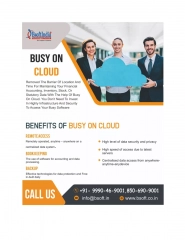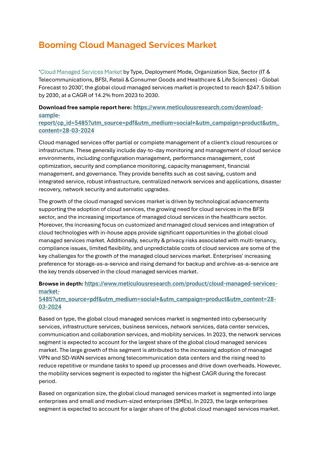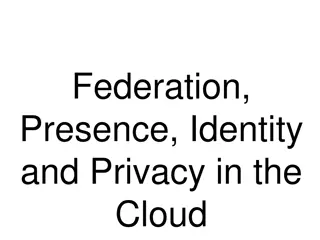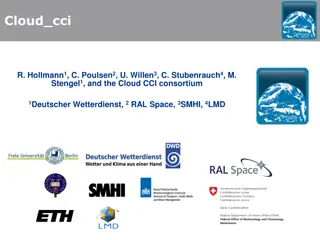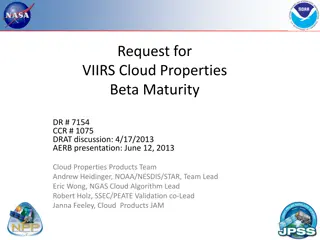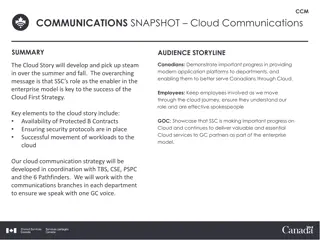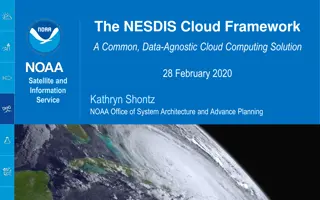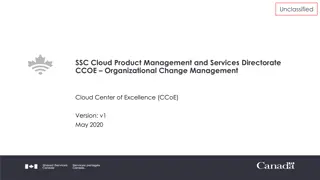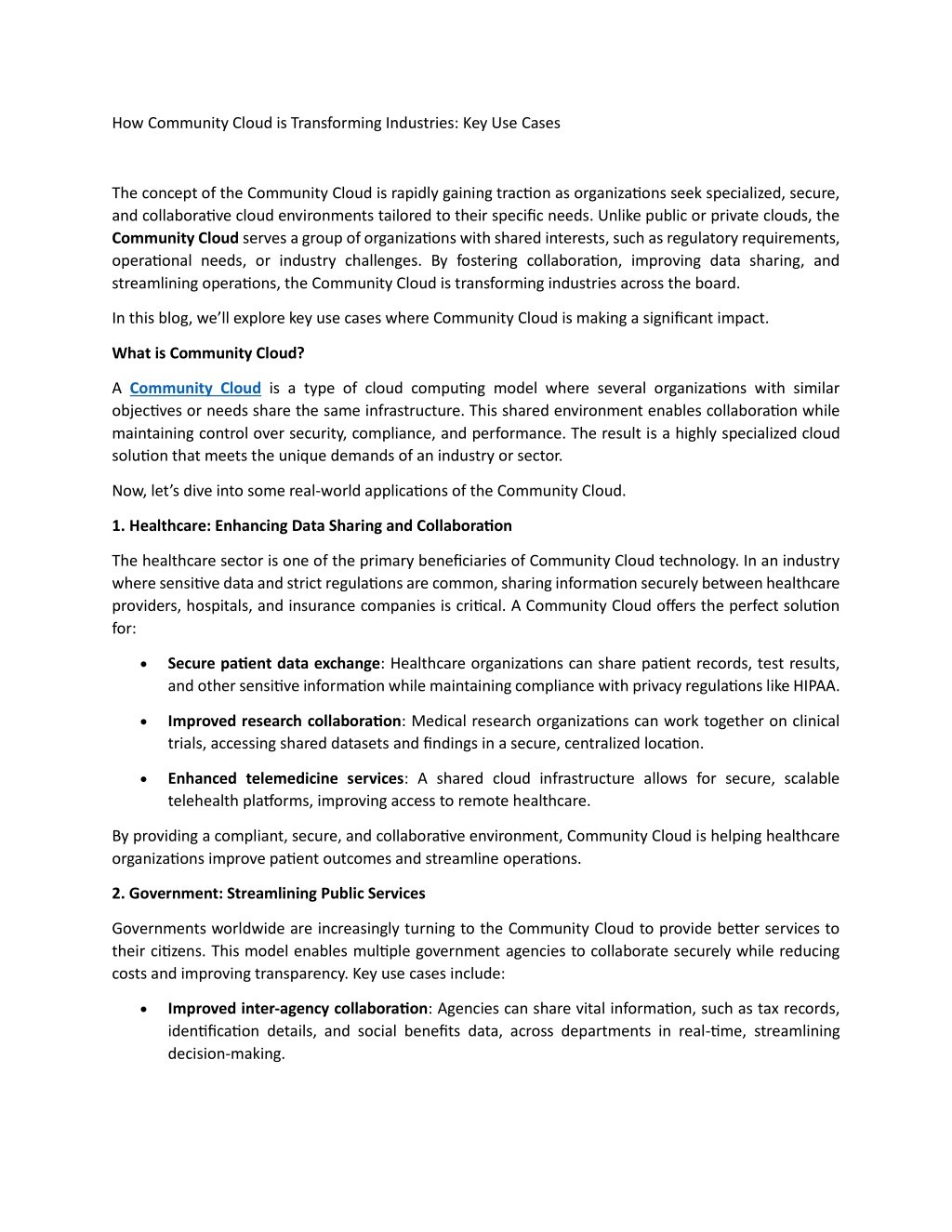
How Community Cloud is Transforming Industries Key Use Cases
The concept of the Community Cloud is rapidly gaining traction as organizations seek specialized, secure, and collaborative cloud environments tailored to their specific needs.
Download Presentation

Please find below an Image/Link to download the presentation.
The content on the website is provided AS IS for your information and personal use only. It may not be sold, licensed, or shared on other websites without obtaining consent from the author. Download presentation by click this link. If you encounter any issues during the download, it is possible that the publisher has removed the file from their server.
E N D
Presentation Transcript
How Community Cloud is Transforming Industries: Key Use Cases The concept of the Community Cloud is rapidly gaining traction as organizations seek specialized, secure, and collaborative cloud environments tailored to their specific needs. Unlike public or private clouds, the Community Cloud serves a group of organizations with shared interests, such as regulatory requirements, operational needs, or industry challenges. By fostering collaboration, improving data sharing, and streamlining operations, the Community Cloud is transforming industries across the board. In this blog, we ll explore key use cases where Community Cloud is making a significant impact. What is Community Cloud? A Community Cloud is a type of cloud computing model where several organizations with similar objectives or needs share the same infrastructure. This shared environment enables collaboration while maintaining control over security, compliance, and performance. The result is a highly specialized cloud solution that meets the unique demands of an industry or sector. Now, let s dive into some real-world applications of the Community Cloud. 1. Healthcare: Enhancing Data Sharing and Collaboration The healthcare sector is one of the primary beneficiaries of Community Cloud technology. In an industry where sensitive data and strict regulations are common, sharing information securely between healthcare providers, hospitals, and insurance companies is critical. A Community Cloud offers the perfect solution for: Secure patient data exchange: Healthcare organizations can share patient records, test results, and other sensitive information while maintaining compliance with privacy regulations like HIPAA. Improved research collaboration: Medical research organizations can work together on clinical trials, accessing shared datasets and findings in a secure, centralized location. Enhanced telemedicine services: A shared cloud infrastructure allows for secure, scalable telehealth platforms, improving access to remote healthcare. By providing a compliant, secure, and collaborative environment, Community Cloud is helping healthcare organizations improve patient outcomes and streamline operations. 2. Government: Streamlining Public Services Governments worldwide are increasingly turning to the Community Cloud to provide better services to their citizens. This model enables multiple government agencies to collaborate securely while reducing costs and improving transparency. Key use cases include: Improved inter-agency collaboration: Agencies can share vital information, such as tax records, identification details, and social benefits data, across departments in real-time, streamlining decision-making.
Cost reduction: By sharing cloud resources, governments can reduce their IT costs, avoiding the need for each department to maintain its infrastructure. Improved public service delivery: Governments can deploy citizen-facing applications (e.g., online portals for tax filing or social services) faster and with better security. With a Community Cloud model, governments can improve efficiency, reduce costs, and deliver more responsive services to citizens. 3. Financial Services: Enhancing Compliance and Security Financial institutions, including banks and insurance companies, face strict regulatory requirements for data privacy and security. The Community Cloud model enables these organizations to meet those requirements while also enhancing collaboration across the industry. Key use cases in financial services include: Shared compliance tools: Financial institutions can access industry-specific compliance tools within the Community Cloud, ensuring they meet regulatory demands like GDPR or PCI DSS. Fraud detection and risk management: Banks can collaborate on fraud prevention initiatives by sharing data and resources in a secure, shared cloud, identifying patterns and anomalies more effectively. Faster innovation: Financial organizations can work together to develop and deploy new services, such as digital banking platforms, within a shared, secure environment. In the highly regulated financial sector, the Community Cloud offers the right balance of security, compliance, and collaboration. 4. Education: Connecting Institutions and Enhancing Learning Educational institutions are using the Community Cloud to improve collaboration between schools, universities, and research centers. This shared cloud environment enables educators and students to access resources, share knowledge, and collaborate on research. Key benefits include: Centralized learning platforms: Schools and universities can deploy learning management systems (LMS) in the Community Cloud, providing students and teachers with seamless access to educational resources. Research collaboration: Universities can share research data and findings securely, accelerating breakthroughs in science, technology, and other fields. Cost savings: By pooling resources, educational institutions can reduce the financial burden of maintaining separate IT infrastructures. Community Cloud is enabling a more collaborative, cost-effective, and innovative educational landscape. Conclusion The Community Cloud is revolutionizing industries by enabling secure collaboration, enhancing compliance, and improving operational efficiency. From healthcare and government to financial services
and education, organizations across various sectors are adopting this model to meet their specific needs. By leveraging shared infrastructure tailored to industry requirements, businesses can innovate faster, reduce costs, and drive better outcomes. Read transforming.html More: https://techhorizonsolutions.blogspot.com/2024/09/how-community-cloud-is-

